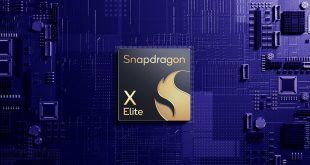Computer power supply units deliver the power to the PC hardware through a number of cables with connectors, the number of which depends on the type and output of the power supply itself. However only the number of the connectors changes; in order to ensure compatibility, the type of the connectors used per generation is identical. The generic specifications for various PSU form factors are defined in Intel's design guides, which are periodically revised.
The largest and most important connector is the ATX 24 pin Molex main connector. As the name implies, it has 24 pins which carry all of the output voltages, several common (ground) pins and even some signal pins (such as the “Power OK” signal). The exact pinout diagram of the ATX 2.X connector can be seen below. You will notice there is a blank pin (N/C), which used to be the -5V line and has been removed from the 2.X standard. There is always only one ATX main connector.


CPUs nowadays require a lot more power than some years ago, therefore power connectors dedicated to CPU power became necessary. Most low and middle range motherboards use a P4 ATX connector, seen at the schematic below, theoretically able to provide up to 192W worth of power to the CPU. On high performance motherboards this connector has already become obsolete and they are using the 8-pin EPS connector instead, which is twice as large as the P4 connector and can supply the CPU with twice as much power.
The EPS connector started as a server/workstation motherboard component but with time it became a necessity to satisfy the ever rising power consumption needs of modern CPUs. Most EPS connectors (also called 4+4 pin connectors) can be split and used with motherboards using a P4 connector. Home consumer power supplies always have only one EPS/P4 connector.


The ever rising power consumption is not a problem related with the main CPU only; during the past few years a great deal of video cards consume great amounts of power. This has led to the addition of another connector, the PCI Express (PCIe) 6 pin connector, able to feed a PCIe video card with up to 75W.
The power demands of some of the video cards would soon lead to the release of the PCIe 8 pin connector, which is able to transfer twice as much power. Even then the power consumption of some video cards could not be satisfied and it is not uncommon to see more than one connector on several of the latest high performance video cards. Latest computer PSUs should have at least one 6 pin PCIe connector but as their power output increases so does the number of the PCIe connectors they offer.


SATA was introduced to upgrade ATA devices to a more advanced and efficient design. Almost all SATA devices, usually hard disk and optical drives, require a SATA power cable. The few exceptions are the early SATA devices which had 4-pin Molex connectors for compatibility with the power supplies at the time they were released. The number of SATA connectors depends on the type and output of the power supply alone, ranging from none to tens of connectors.


The 4-pin Molex connector is by far the most popular connector in the history of computer power supplies. It has been in use ever since the first implementations of switching PSUs designed for personal computers and it still is a very common connector, despite the introduction of the SATA connectors a few years ago. 4-pin Molex connectors are being used to power almost everything inside a PC, ranging from drives and fans to providing supplementary power to special motherboards and devices. The number of 4-pin Molex connectors depends on the type and output of the power supply alone, ranging from a mere couple to tens of connectors.


The 4-pin Berg connector was introduced when the first 3.5″ floppy drives started showing up, which is why it is also called a floppy connector. Although some late AGP video cards also used Berg connectors for extra power which the AGP slot could not provide at the time, the Berg connector never became as popular as the 4-pin Molex connector. At this point of time it is slowly being phased out, following the disappearance of the 3.5″ floppy disk drives. Most recent computer PSUs have only one or two Berg connectors at most.


Please feel free to discuss this with our community over here
 KitGuru KitGuru.net – Tech News | Hardware News | Hardware Reviews | IOS | Mobile | Gaming | Graphics Cards
KitGuru KitGuru.net – Tech News | Hardware News | Hardware Reviews | IOS | Mobile | Gaming | Graphics Cards


